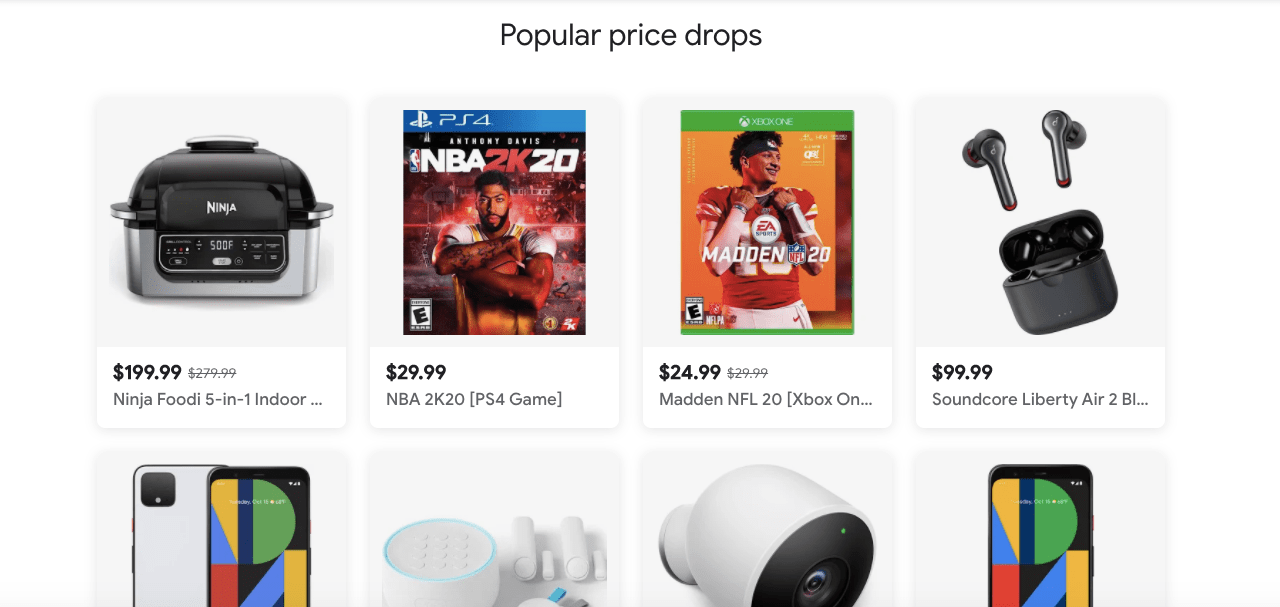How Google is trying to woo sellers away from Amazon

Amazon’s decision in March to temporarily stop accepting shipments of non-essential goods to its warehouses left many sellers in limbo. That presents a new opportunity for other marketplaces like eBay, Walmart, Target and Google to woo over dissatisfied sellers.
Earlier this week, Google announced that it would be now making it free for merchants to sell their products on Google Shopping. Previously, merchants were charged on a cost-per-click basis. Google also said that it would allow merchants to link their PayPal accounts to more easily onboard them to Google Shopping.
Google framed its announcement as a decision to advance features it was already working on to help retailers’ whose physical stores were closed. But this decision also clearly gives merchants who generate most of their sales from Amazon an incentive to try listing their products through Google Shopping as well.
For years, no e-commerce marketplace in the U.S. has been able to match neither Amazon’s customer base, nor the number of services Amazon provides to sellers to help them run their business. But, the coronavirus epidemic has highlighted some fresh dangers of relying too heavily on Amazon. For sellers of non-essential goods who relied on Fulfilled by Amazon, some of them had no other fulfillment capabilities built out, and had no way of getting their goods to customers on their own once Amazon temporarily stopped accepting shipments. According to analytics firm Marketplace Pulse, 80% of the top 10,000 Amazon sellers in the U.S. use FBA.
In order to win over new sellers, marketplaces have to double down on what unique advantages that they can offer sellers that Amazon can’t, like more dedicated customer service. But first, they have to convince sellers that their platforms have a big enough audience that will help them drive enough sales to justify focusing less on Amazon. And for that, there is no easy answer.
“Some of our clients were not set up to really do anything other than Amazon, were pretty FBA dependent, and then when this all went down, they didn’t have any inventory really in other places,” said Elizabeth Marsten, senior director of strategic marketplace services at Tinuiti. “The longer this goes on, the higher my expectations are… that we will see a different new normal that is not as reliant on Amazon.”
Google Shopping has long struggled to recruit both merchants and users, despite having gone through a number of rebrands in the past. The Information reported that in 2018, when Google Shopping was still known as Google Express, it did $1 billion in sales, while Amazon did $142 billion in product sales that year. When Google rebranded Google Express to Google Shopping in 2019, the company started focusing on recruiting more small to medium sized retailers, while bigger retailers like Sephora, Kohl’s and PetSmart left the platform.
Even though Google has long been a place where shoppers research products, it’s still losing out on many of the sales to Amazon.
“No customer thinks of Google when they want to buy something. Despite the seventeen years of Google shopping efforts. That’s what they need to do,” Juozas Kaziukenas, founder of Marketplace Pulse, said in an email.
Marsten said that Google does have a unique opportunity to provide merchants with better analytics and data around shopping behavior than Amazon, particularly if the changes announced this week do lead to more sellers selling on the platform. She gave the example of Google’s Shopping Actions program, which allows shoppers to build a universal cart across multiple Google properties, as something where merchants can get unique insight into shopping behavior that they can’t get on Amazon.
“Whenever a client is trying out a new marketplace, I tell them, ‘it’s not Amazon, and that’s ok,” Marsten said. “You’ve got to be flexible and manage your expectations.”

